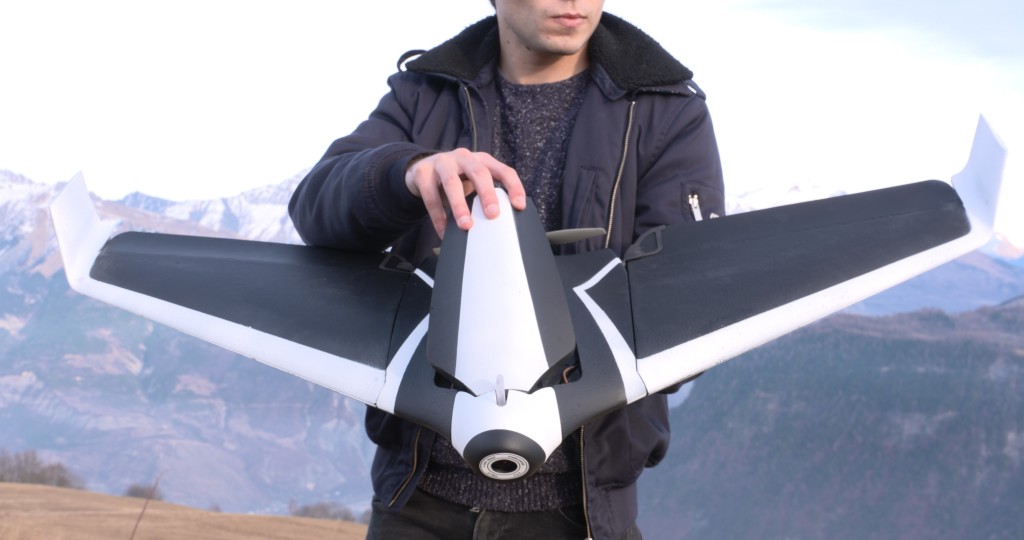Drone Safety: Unmanned Aerial Vehicles are Turning Everyone into Pilots
It’s no secret that drones have been the growing trend over the last few years. Over the holiday season, a study conducted by electronics protection plan company Square Trade revealed that drones made up 20% of the electronics wish-lists for Americans.

In keeping with the trend, the behemoth consumer electronics show (CES) held in Las Vegas, NV each year saw an influx of unmanned aerial vehicles (UAVs) early in January.
Among the many drones that made their appearance at the show was aerial technology company DJI with enhancements to its two flagship drone series Phantom 3 4K and Inspire 1 Pro. Chipmaker Intel demonstrated a collision-avoiding drone that can dodge obstacles with the help of RealSense technology which employs lasers to determine distances of nearby objects. Parrot, a CES regular, unveiled its newest prototype – a winged drone that operates more like a plane and requires zero piloting skills. Another drone that attendees were able to get up-close-and-personal with was the Lily Camera, a winner of a CES 2016 Innovation Award, which acts more like a stalking video camera than a drone. The flying vehicle can follow you around wherever you go, recording your every move.
There were many other drones: lightweight drones that can be used as industrial workhorses, tiny miniaturized drones for everyday consumers, and even paper airplane drones.
Recognizing their versatility and unique video features, consumers are going crazy for drones, and while drones aren’t exactly inexpensive, with some of the aforementioned models reaching into the $800 range, many manufacturers are developing more cost-efficient models so that almost anyone can own their own drone.
For example, the MOTA JETJAT Nano, which was also released at CES 2016, will be on the market early this year for just $40.

Beginning February 19, 2016, the Federal Aviation Administration (FAA) will require all drones weighing between .55 pounds and 55 pounds to be registered or owners will face fines up to $27,000. In keeping with this new requirement and the growing trend, FAA administrator Michael Huerta addressed the crowds at CES, sharing that so far, over 180,000 drones have been registered.
What this means is that the average hobbyist or consumer looking to get their hands on one of the newest drones will have to pay $5 every three years and fill out documentation on the FAA website regarding their drone. After completing the registration process, users will receive an identification number which is required to be displayed on the drone.
Heurta touched on some of the driving forces for this move to register drones, pointing out that advancements in technology have brought with them a new generation of airspace users, and once they begin flying their drones, they become pilots.
“There are safety implications to how they fly, and there are rules and regulations they must follow. It also will help them become part of the safety culture that has been deeply embedded in traditional aviation for more than a century, while still allowing for the recreation and innovation that are staples of American aviation. And, when necessary, registration will help us track down people who operate unsafely,” said Heurta at CES.
The need to regulate drones springs from their apparent and growing popularity, especially in the aerial imaging platform. Over the last year alone, there have been a plethora of drone incidents which have also played a significant role in the need for regulation.
For example, in September a drone enthusiast and school teacher crash-landed his drone into the U.S. open stands in New York. Some other incidents included a drone crashing into a ski race during the Alpine Ski World Cup in Italy and a drone colliding with a moving car in Canada.
Events of this nature have raised concern not only about drone safety, but the question of liability in these instances, too.
If you find some of the newest drones appealing and want to start flying, the U.S. Air Force outlines some basic guidelines. Small unmanned aircraft are at the bottom of the food chain and at the mercy of airplanes, gliders, parachutists, and even the Goodyear blimp. According to the Air Force, “if it flies or glides, it has the right of way.”
Drone operators should also always be able to see their vehicle, so no controlling a drone from your living room couch, although new technology is making that possible, too. Also, UAVs should not be flown over any individuals.
If this seems restrictive, the Air Force also outlines some of the different national airspace categories so users can tell exactly when and where they are not permitted to fly.
If you’re willing to work within the guidelines and obey the new rules and regulations, you may enjoy some quality time flying your brand new drone.


Comments are closed, but trackbacks and pingbacks are open.